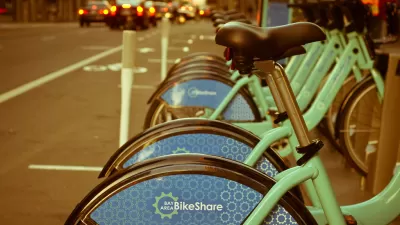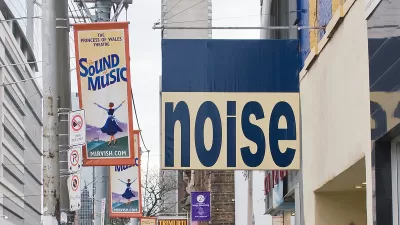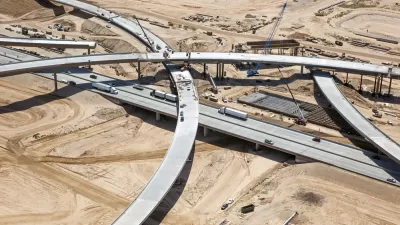Some good news, and some bad, on the effect of bike-share programs on transit ridership.

"Introducing bike-share to a city correlates with an increase in light and heavy rail ridership, but a drop in bus ridership, according to a study from researchers at the University of Kentucky," reports Katie Pyzyk.
"The study found a 1.8% decrease in bus ridership. In addition, heavy rail ridership experienced a decrease of 1.3% per year after ride-hailing services entered a market, while bus ridership saw a decrease of 1.7% per year," adds Pyzyk. "But the data found that bike-share had a positive effect on subway ridership, increasing it by 6.9%, and light rail ridership saw an uptick of 4.2%."
Researchers analyzed data from the National Transit Database and the U.S. Census Bureau's American Community Survey for seven U.S. cities between 2002 and 2018.
FULL STORY: Study: Bike-share programs affect transit ridership

Alabama: Trump Terminates Settlements for Black Communities Harmed By Raw Sewage
Trump deemed the landmark civil rights agreement “illegal DEI and environmental justice policy.”

Planetizen Federal Action Tracker
A weekly monitor of how Trump’s orders and actions are impacting planners and planning in America.

The 120 Year Old Tiny Home Villages That Sheltered San Francisco’s Earthquake Refugees
More than a century ago, San Francisco mobilized to house thousands of residents displaced by the 1906 earthquake. Could their strategy offer a model for the present?

Ken Jennings Launches Transit Web Series
The Jeopardy champ wants you to ride public transit.

BLM To Rescind Public Lands Rule
The change will downgrade conservation, once again putting federal land at risk for mining and other extractive uses.

Indy Neighborhood Group Builds Temporary Multi-Use Path
Community members, aided in part by funding from the city, repurposed a vehicle lane to create a protected bike and pedestrian path for the summer season.
Urban Design for Planners 1: Software Tools
This six-course series explores essential urban design concepts using open source software and equips planners with the tools they need to participate fully in the urban design process.
Planning for Universal Design
Learn the tools for implementing Universal Design in planning regulations.
Clanton & Associates, Inc.
Jessamine County Fiscal Court
Institute for Housing and Urban Development Studies (IHS)
City of Grandview
Harvard GSD Executive Education
Toledo-Lucas County Plan Commissions
Salt Lake City
NYU Wagner Graduate School of Public Service




























